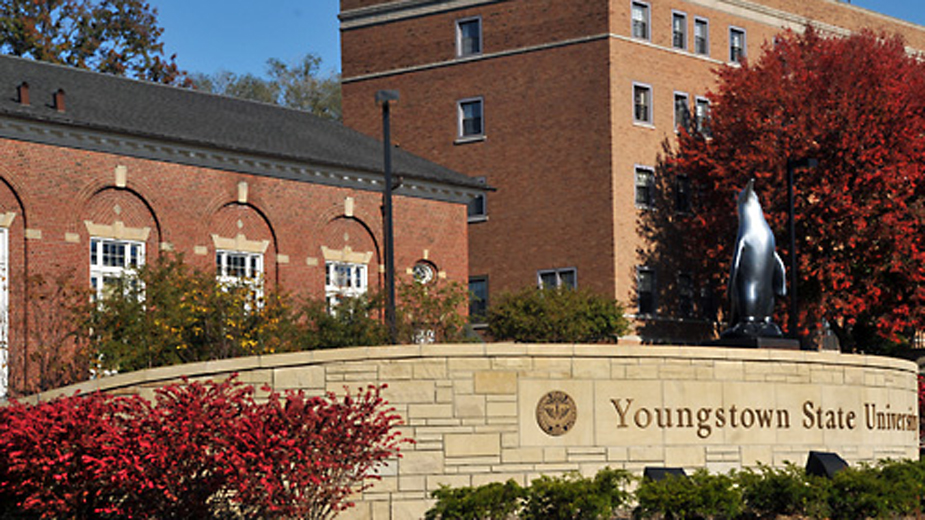YSU Salutes Successful Research Grant Applicants
YOUNGSTOWN, Ohio – Youngstown State University Thursday saluted those on its faculty who applied for research grants and last year secured $7.5 million in funding across diverse disciplines: STEM, education, business administration, the humanities, and health and human services.
It was, as YSU President Jim Tressel noted at the annual Research Recognition Luncheon, the largest number of grants and most money the university has been awarded since 2011.
The 83 grants and $7.5 million awarded YSU in fiscal 2016 (ended June 30) exceeded the 67 awarded and $4.6 million in 2015 and came from agencies and foundations that ranged from the National Science Foundation to Ohio Department of Education, from the National Oceanic and Atmospheric Administration to the Raymond John Wean Foundation.
Leading the way was the $4 million awarded to the College of Science, Technology, Engineering and Mathematics from the Air Force Research Laboratory to advance additive, or 3-D, manufacturing to prolong the life of Air Force aircraft. It is the largest grant in YSU history, Mike Hripko, associate vice president for research, noted.
Associate professor Brett Conner and his colleagues will use the funding to make replacement parts for older aircraft so they can keep flying. The manufacturers no longer make replacement parts.
The National Endowment for the Arts awarded its first grant to YSU, $100,000, to fund a public arts project.
A 21st Century Community Learning Center grant from the state Department of Education is underwriting Angela Cameron’s request for $600,000 for after-school programs in Brookfield, East Liverpool and Campbell elementary schools. Cameron is director of the Center for Human Services Development in the Beeghly College of Education.
The Ohio Board of Nursing is providing $90,000 to professor Nancy Wagner, chairwoman of the nursing department in the Bitonte College of Health and Human Services.
Mike Beverly received the first staff recognition award for securing funding from the Wean Foundation for the YSU Summer Bridge Program. Summer Bridge helps minority incoming freshmen improve their chances of success at YSU. Beverly, a graduate of YSU, is a senior coordinator at its Center for Student Progress where he has been an academic coach 15 years.
In his remarks, Provost Martin Abraham, iterated the importance of research. “Research is a difference-maker at our university,” he said. “It helps undergraduates and graduates understand what they learn and increases enrollment” when prospective students learn the opportunities YSU offers.
Abraham and Hripko have been engaged with Tom Tyrrell, CEO and founder of Great Lakes Biomimicry, who is working to have universities and corporations across northeastern Ohio share nonproprietary research.
Tyrrell, the keynote speaker, related how his nonprofit organization is working to create the conditions that result in developing scientific and mathematical talent in grades K-12 and into college and graduate school.
He described Biomimicry, founded in 2010, as “a catalyst organization” whose goal is to encourage closer cooperation among the R&D departments of the major corporations based in northeastern Ohio and the faculty of the STEM schools nearby.
Should his efforts succeed, northeastern Ohio can add $425 billion to the national economy within the next decade, he said. If the curriculum changes Biomimicry is working for are effected and students are attracted to learning everything from engineering in nature, upon graduating these students would alleviate the 3,000 jobs that would go unfilled.
Biomimicry looks at what plants and animals do in nature to feed and defend themselves. He offered three examples of how humans have learned from nature:
- The development of bird-friendly glass so birds don’t crash into windows in buildings. By making glass with small ultraviolet patterns (invisible to the human eye), birds are deterred from flying into windows and either killing or severely injuring themselves.
- The Shinkansen bullet train in Japan. Scientists looked at the beak of a kingfisher for the cone of the train and wing structure of an owl to develop a better train that has no sonic boom, is 15% faster and consumes 15% less fuel.
- What Southwestern Airlines learned from ants about routing and shipping cargo. Over the course of many millennia, ants have developed algorithms to establish routes to carry food back to their anthills, routes that are not the shortest or most direct but the fastest. The logistics staff at Southwest determined some of these algorithms and have adapted them to reduce the time cargo remains on the ground and how quickly their planes ship it.
GoJo Industries, which makes hand sanitizers, used biomimicry to learn, “How does nature deliver fluids?” from female mammals feeding their newborn to a skunk releasing its odor. Eighteen months later, Tyrrell said, its engineers felt they had come up with the optimal dispensers for their products, optimal here defined as including “cradle to cradle biodegradability.”
Copyright 2024 The Business Journal, Youngstown, Ohio.



